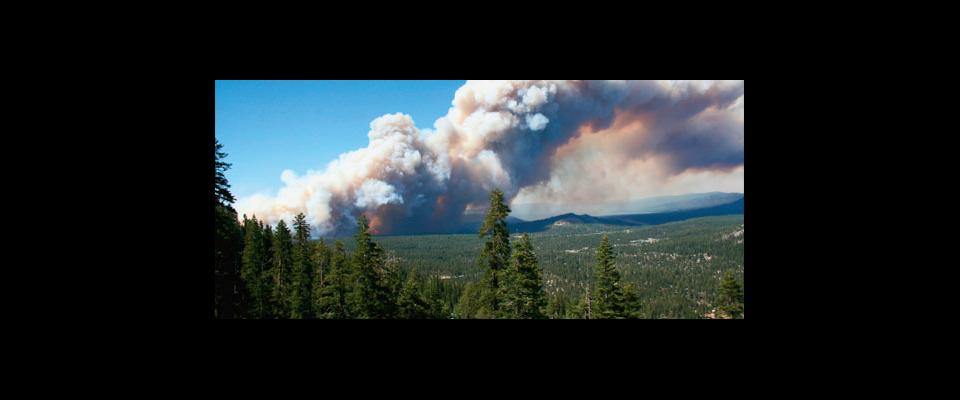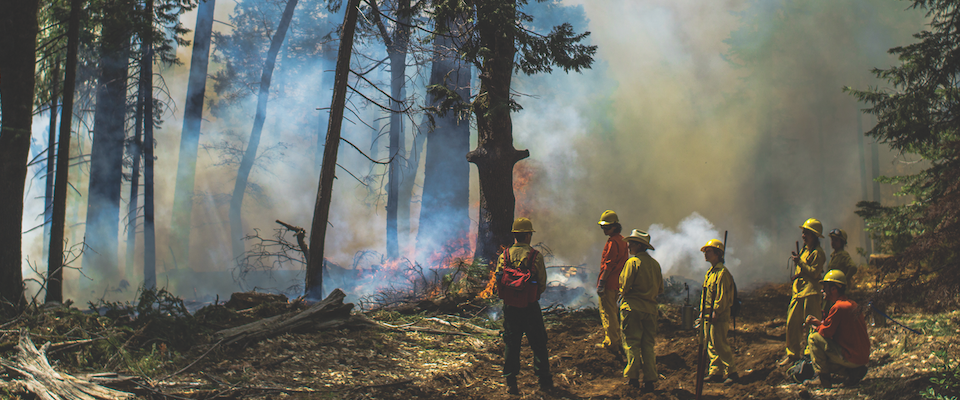Westerners who grew up listening to Smokey the Bear’s pithy sermons on saving forests and now regularly choke through smoky summers are still adjusting to the idea that fire is a fact of life. But, says one Berkeley researcher, not necessarily a devastating one.
For the past century, firefighters have risked their lives to keep forests green, inadvertently contributing to fire danger. The accumulated trees and underbrush (fuel) on millions of acres have rendered our public lands more flammable than ever before. Now, scientists across the nation, led in California by Scott Stephens, associate professor of fire sciences, are experimenting with ways to handle that tinderbox so that when fire does arrive—as history and probability say it will—it doesn’t cause ecological and economic disaster.
Stephens’s research compares popular methods of thinning forests to avoid wide-scale wildfires. Based at UC’s Blodgett Forest Research Station, about 75 miles west of Lake Tahoe, Stephens and his team divided their study area into four sections: One was thinned mechanically using chainsaws; another was burned in a controlled fire; the third was thinned and then burned; and the last section was left untouched. Through modeling, they discovered that fire moved fastest and burned hottest through the untreated forest. Thinning alone resulted in a less intense fire—but prescribed fire, either alone or combined with thinning, caused the fire’s rate of spread and flame size to drop considerably.
Expense often prevents land managers from removing a forest’s fuels. But it’s not impossible for a project to end up in the black: Harvested wood chips can be converted into electricity, for example, or larger trees can be cut and sold to offset the cost of management.
Now Stephens is studying the longer-term effects of his treatments on forest ecology and tree mortality. And in this climate-conscious world, he’ll take a look at the effect of prescribed fire on forests’ ability to sequester carbon. “Certainly, when you burn a forest you create carbon dioxide, but you also decrease the chance of a catastrophic loss of carbon.”
From the November December 2007 New Media issue of California.




















